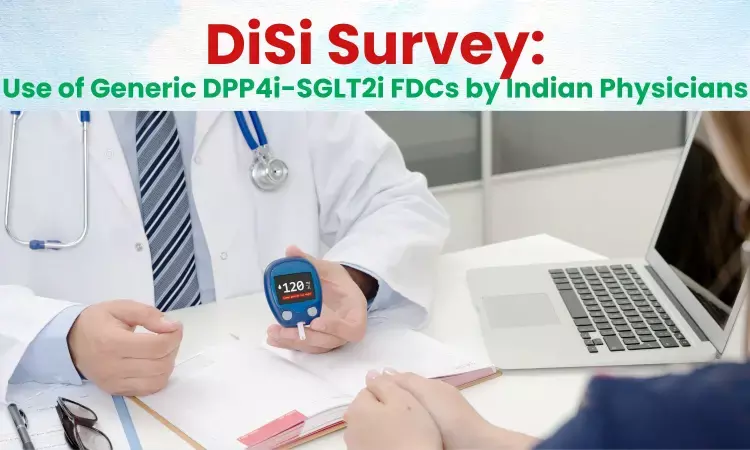- Home
- Medical news & Guidelines
- Anesthesiology
- Cardiology and CTVS
- Critical Care
- Dentistry
- Dermatology
- Diabetes and Endocrinology
- ENT
- Gastroenterology
- Medicine
- Nephrology
- Neurology
- Obstretics-Gynaecology
- Oncology
- Ophthalmology
- Orthopaedics
- Pediatrics-Neonatology
- Psychiatry
- Pulmonology
- Radiology
- Surgery
- Urology
- Laboratory Medicine
- Diet
- Nursing
- Paramedical
- Physiotherapy
- Health news
- Fact Check
- Bone Health Fact Check
- Brain Health Fact Check
- Cancer Related Fact Check
- Child Care Fact Check
- Dental and oral health fact check
- Diabetes and metabolic health fact check
- Diet and Nutrition Fact Check
- Eye and ENT Care Fact Check
- Fitness fact check
- Gut health fact check
- Heart health fact check
- Kidney health fact check
- Medical education fact check
- Men's health fact check
- Respiratory fact check
- Skin and hair care fact check
- Vaccine and Immunization fact check
- Women's health fact check
- AYUSH
- State News
- Andaman and Nicobar Islands
- Andhra Pradesh
- Arunachal Pradesh
- Assam
- Bihar
- Chandigarh
- Chattisgarh
- Dadra and Nagar Haveli
- Daman and Diu
- Delhi
- Goa
- Gujarat
- Haryana
- Himachal Pradesh
- Jammu & Kashmir
- Jharkhand
- Karnataka
- Kerala
- Ladakh
- Lakshadweep
- Madhya Pradesh
- Maharashtra
- Manipur
- Meghalaya
- Mizoram
- Nagaland
- Odisha
- Puducherry
- Punjab
- Rajasthan
- Sikkim
- Tamil Nadu
- Telangana
- Tripura
- Uttar Pradesh
- Uttrakhand
- West Bengal
- Medical Education
- Industry
Use of Generic DPP4i + SGLT2i FDCs by Indian Physicians - The DiSi Survey

The Indian phenotype of T2DM patients is associated with clustering of cardiovascular risk factors, increased insulin resistance, and reduced beta-cell function. In India, various cost-effective, generic FDCs of DPP4i-SGLT2is are available for T2DM management. Hence, investigators conducted this knowledge, attitude, and practice (KAP) survey to study the practical use of SGLT2i-DPP4i FDCs in Indian settings.
Part of these survey findings were presented at the American Diabetes Association (ADA) 2024 Congress held in Orlando, Florida.
Results:
- Total 185 physicians from multiple states of India completed the survey
- In Indian Clinical Practice, there is a significant burden of patients with T2DM who present with high baseline HbA1c (newly diagnosed treatment naive or despite metformin monotherapy)
- 48% physicians reported that more than 40% of their newly diagnosed, treatment-naive patients present with a baseline HbA1c >8%
- 52% physicians reported that, more than 40% of patients present with HbA1c >8.5% despite metformin monotherapy
- Generic DPP4i/SGLT2i FDCs were preferred in these patients also considering their extra-glycemic benefits.
- 60.5% (n=112) respondents prescribe these FDCs due to all four clinical reasons namely:-
- CV benefits of SGLT2i are an added advantage in Indian population (since Indian patients often have clustering of multiple CV risk factors).
- Targets multiple pathways in ominous octet.
- FDCs promotes weight loss.
- Significantly lesser risk of hypoglycaemia compared to sulfonylurea (SU) based FDCs.
- From a glycemic control perspective, 65.9% of respondents preferred DPP4i–SGLT2i FDCs for below 3 scenarios, namely:
- Treatment-naive patients with contraindication/ intolerance to metformin and HbA1c >8%.
- Uncontrolled on metformin monotherapy with HbA1c >8.5%.
- As add-on to insulin.
- Unique Finding - Most physicians (85%) noted reduction in SGLT2i associated Genito-Urinary Tract Infections (GUTIs) with use of DPP4i/SGLT2i FDCs or concomitant administration of both agents.
- Further well designed studies may confirm this finding
- Amongst the DPP4i/SGLT2i FDCs available in India, most physicians preferred Sitagliptin/Dapagliflozin as FDC of choice. Sita-Dapa was the most preferred FDC (36.2% respondents) of respondents (n=67).
Takeaways:
- Indian phenotype is associated with clustering of CV risk factors like HTN, dyslipidemia, and abdominal obesity which lead to early atherosclerotic cardiovascular disease compared to Caucasian populations.
- Hence, management of T2DM in India warrants early consideration of therapies that confer CV protection (e.g., SGLT2i) at the time of diagnosis itself.
- Studies have demonstrated that in global reference populations, patients with diabetes have already lost approximately 50% of their β-cell mass at the time of diagnosis itself. Also South Asian phenotype has reduced baseline β-cell function vs population groups.
- This further underscores the need for considering agents that preserve β-cell function (e.g., DPP4is) early in the course of diabetes
- This pan-India survey also highlights that patients with T2DM often present with a high baseline HbA1c in the Indian physician’s clinic. SGLT2i-DPP4i FDCs satiate an important gap whereby current guidelines recommend initiating dual-combination therapy when target HbA1c is >1.5% compared to baseline HbA1c.
Reference: Saboo B, Prajapati C, Muralidharan P, et al. DiSi Survey: Use of Generic DPP4i–SGLT2i Fixed-dose Combinations in Indian Clinical Practice. J Assoc Physicians India 2024;72(12):22–24
genericdpp4isglt2idisi surveydiabetestype 2 diabetes mellitushypoglycaemiaglycemic controlSitagliptindapagliflozinSitadapaDapagliflozin+Sitagliptin
BDS, MDS(orthodontics)
Dr. Garima Soni holds a BDS (Bachelor of Dental Surgery) from Government Dental College, Raipur, Chhattisgarh, and an MDS (Master of Dental Surgery) specializing in Orthodontics and Dentofacial Orthopedics from Maitri College of Dentistry and Research Centre. At medical dialogues she focuses on dental news and dental and medical fact checks against medical/dental mis/disinformation
Next Story


